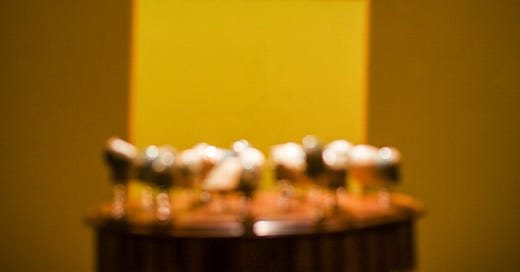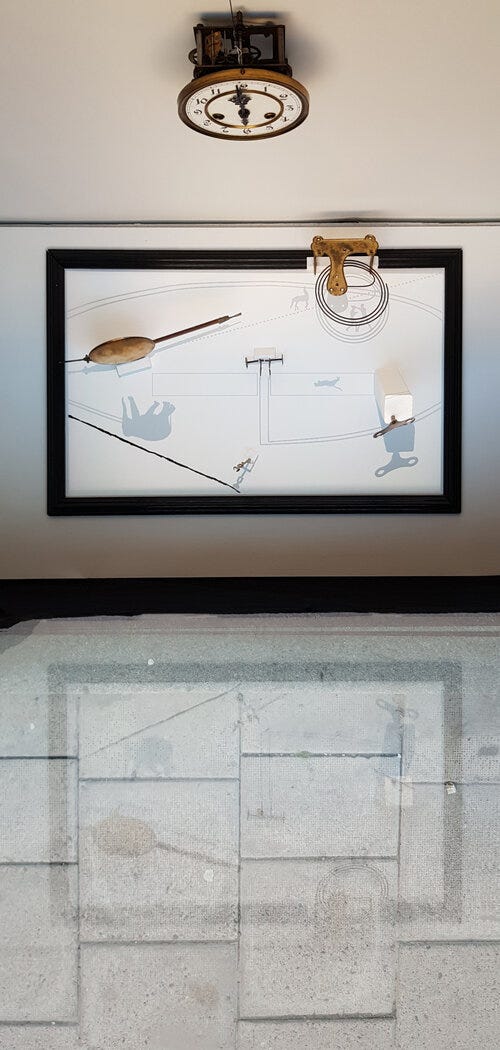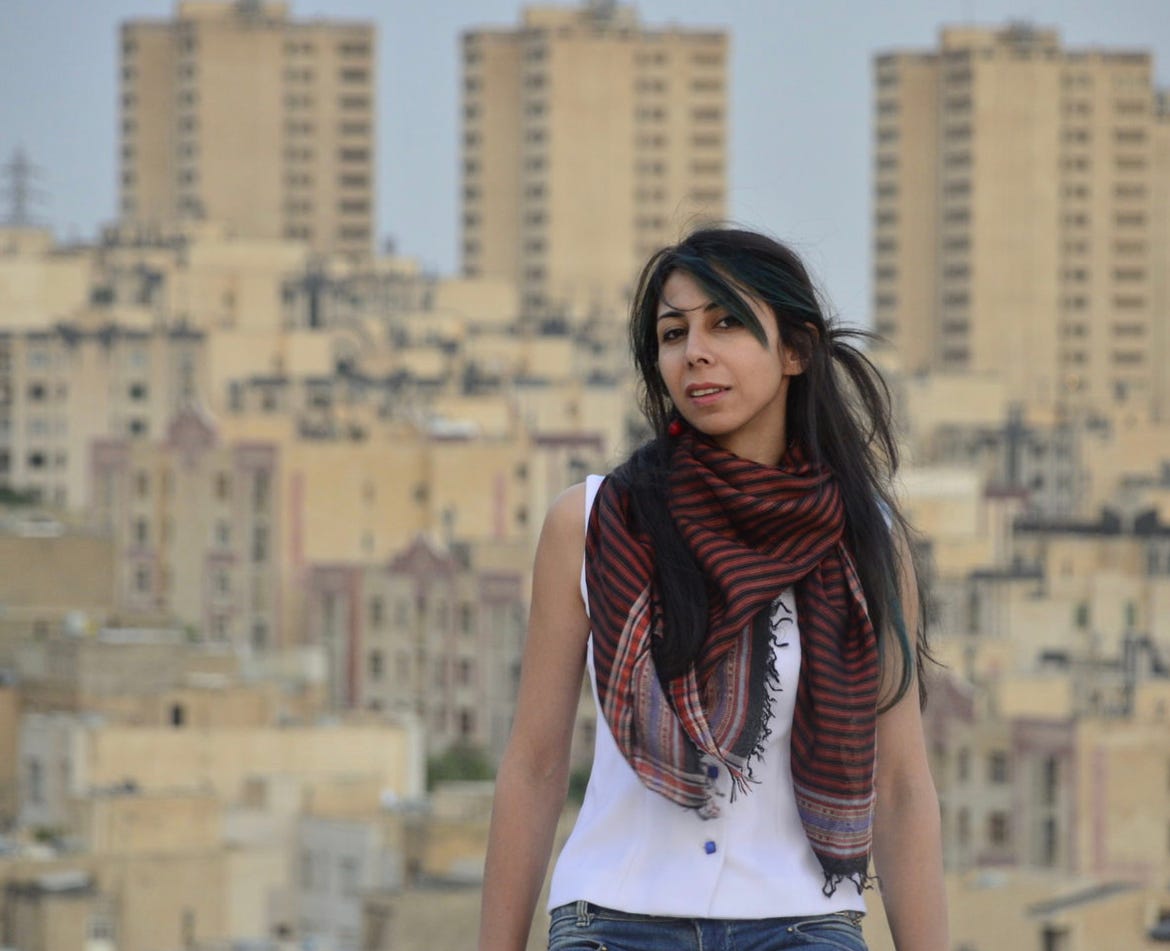As a visual artist, Zahra Zavareh, an Iranian currently living in Stockholm, seeks to encourage the viewers to look beyond the obvious. This was true of her latest show “Toad’s Wool,” which not only captured my interest but through the conversations with the artist made me reflect how the chaos around us in the greater world at the time left one feeling adrift.
Satire, or perhaps even humor, was what drew my eye as soon as I entered the Detroit Stockholm collective space where Zahra was showing her work. The art seemed to be asking me to think critically and approach it from many angles in an effort to find meaning where perhaps none existed. It was about the realities we face in our world today, the absurdity of some of those realities and how we process them day to day. When I returned to speak with Zahra what emerged was a welcoming and insightful conversation about her work overall, her process, her thinking on satire, absurdity, life and art.
Lidia Oshlyansky: When I visited your "Toad's Wool" exhibit earlier this year, you told me that it was different for you. What made it different from the rest?
Zahra Zavareh: In this specific show, I just wanted to talk about absurdity without looking for a specific theme. The last year was really tough and difficult for me. In September 2022, the "Zan Zendegi Azadi" movement began in Iran, triggered by the killing of #MahsaAmini. Over 500 demonstrators lost their lives, and thousands were injured or arrested, more are still facing detainment for demanding basic human rights, dignity, and liberty. We were in constant shock throughout the year, and each time we thought things couldn't get any worse, something even more horrible happened. It didn’t make sense to make art, and I didn't want to make art. For example, a lot of the Iranian diaspora started making political art. I didn't want to do that because I am in Sweden, sitting in a very safe place and it didn't make sense to me to make something political.
So the pressure of time and the need to do this particular exhibit at Detroit Stockholm was an important constraint for this show?
Yes. I was really thinking about canceling the exhibition but then I thought just wait, maybe something will happen. I would just come to my studio and stare at the wall, following the news and just doing nothing. Despite last year being horrific, I didn’t quit. I was reading and researching, not to find a theme for my work, but simply to pass the time.
Then I started thinking, what if I make something about just absurdity and nonsense itself, without a specific theme. That’s how I came up with this show. I was also reading a specific genre in Persian literature called Tazriq (Mohmal), which translates into nonsense verse.
The whole idea behind it was just to embrace the nonsense; when you read it, your mind wants to grasp a meaning but you can't because there is none. Then, I started doing more research: reading Dada poetry and comparing it to Tazriq. Dada poetry doesn’t follow any specific rules. One recipe for making Dada poetry, is to find a newspaper, cut out the letters that you like, put them in a bag and then bring them out, one at a time, to create the poem.
There is no regulation or articulation for that, you simply deliver the poem to the audience, leaving it to them to make meaning. The thing that I especially admire about the special form of Persian poetry is that you have this way of making the perfect poem, but the meaning is missing. It could be a very long poem or even a book with still no meaning.
This got me to thinking what if I created an art exhibition that is not based on chance or on an already constructed piece, as Dada did. Rather, do something that truly shows craftsmanship or craftswomanship while yet having no significance behind it, or at least not for me. During this time of research and reflection, I came across Albert Camus' comment about absurdity and how artists can make an absurd object in his essay on the myth of Sisyphus, which I especially enjoyed. I was constantly thinking about all the challenges in my way and how I could make absurdity work. I couldn't describe it very well, and then I read this piece and thought, "yeah, this is it '' - this is what I'm going to say.
I believe you told me that in the video in your show you incorporate Camus’ writing?
That's it; I read it several times before incorporating it into my act. As you may remember, I was thinking of doing a video and starting with that specific paragraph from his book about how artists can make this absurd work.
What makes it even more absurd is that the audience has no idea what I'm saying, but I know there's something there. So that's it, and the aesthetic choice for the video is linked to the other pieces.
Also, because it was a three-part installation, I didn't give the pieces titles in the show, instead, they all had the same name. That's how "Toad's Wool" came to be, which I discovered in one of the poems I was reading.
Which is also, of course, nonsensical. Which in turn then is a part of the commentary on the absurd.
Exactly, it doesn't make sense to you but it has a good vibration.
Yeah, it sounds good.
Of course, I found it in Farsi, and in Farsi it is “Pashm-i Vazagh.” It's a very interesting combination. I wondered if I translate it, does it work, is it still interesting? I asked several people, and they thought it was very good. So, I said ok, it’s going to be “Toad’s Wool.”
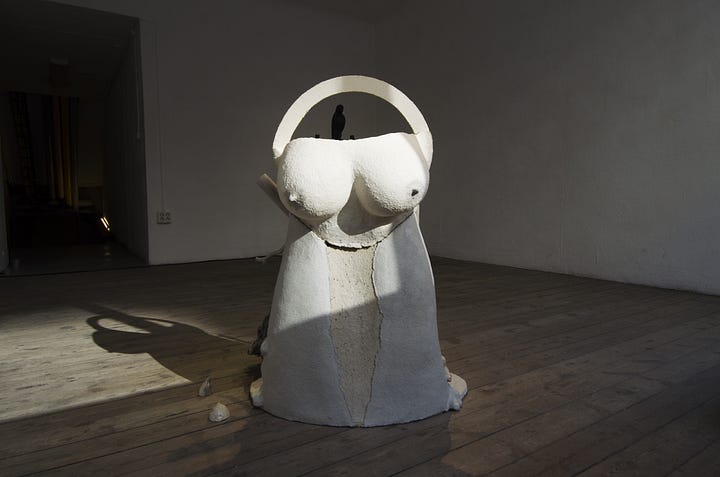
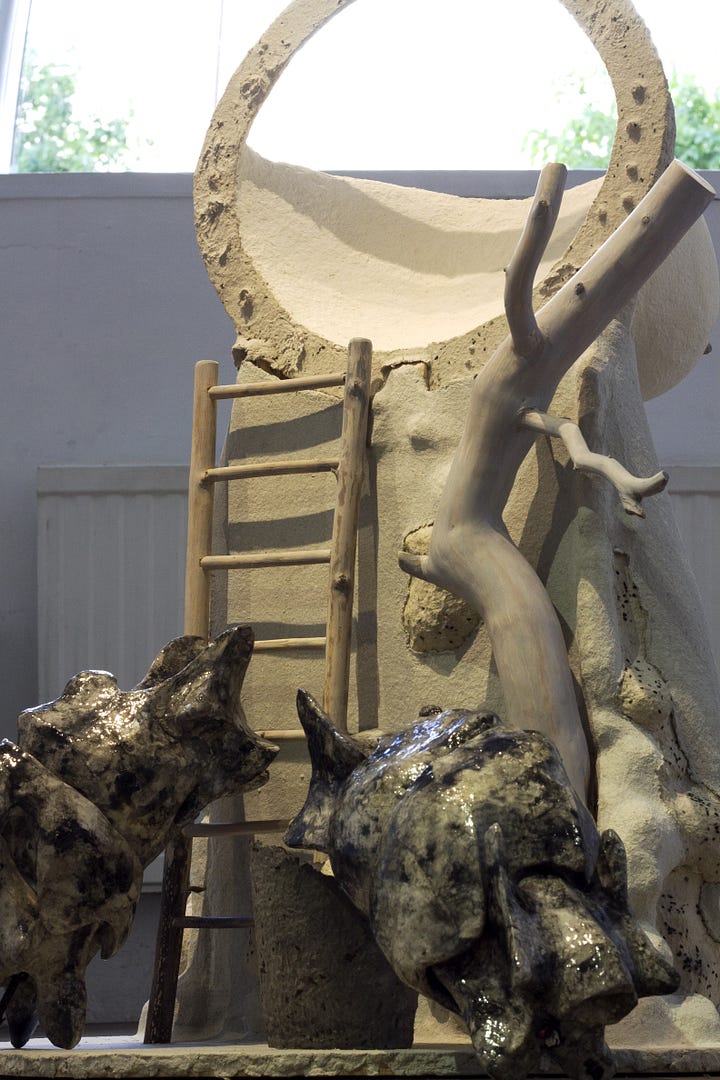
There are so many things I want to pick up on that you’ve just said. “Toad's Wool” was your reaction to what happened in Iran last year. Absurdism is founded on the idea that life has no meaning. Has this project helped you make sense or process the events back in Iran?
I don’t believe that Absurdism is solely about the absence of meaning in life; it is also about the freedom to find a purpose. I suppose it is relevant for most artists, as their art often serves as a coping mechanism. While it allows for processing, it's impossible to find sense in certain events.
My understanding is that Iran often censors artists, at least filmmakers ... is absurdism a way to avoid this? Does living in Sweden change the way you think about art?
In general, Iran boasts a rich cultural heritage, despite enduring a turbulent history and often being under oppressive rule. However, art and culture have consistently found a way to thrive. Literature, in particular, has been and continues to be a sanctuary for Iranians.
I'm not sure if absurdism is the ultimate solution for everyone, but for me, as I mentioned in my statement, embracing the absurd in these Kafkaesque times is my approach. I don’t believe living in Sweden has significantly altered my style but perhaps it has influenced my methodology.
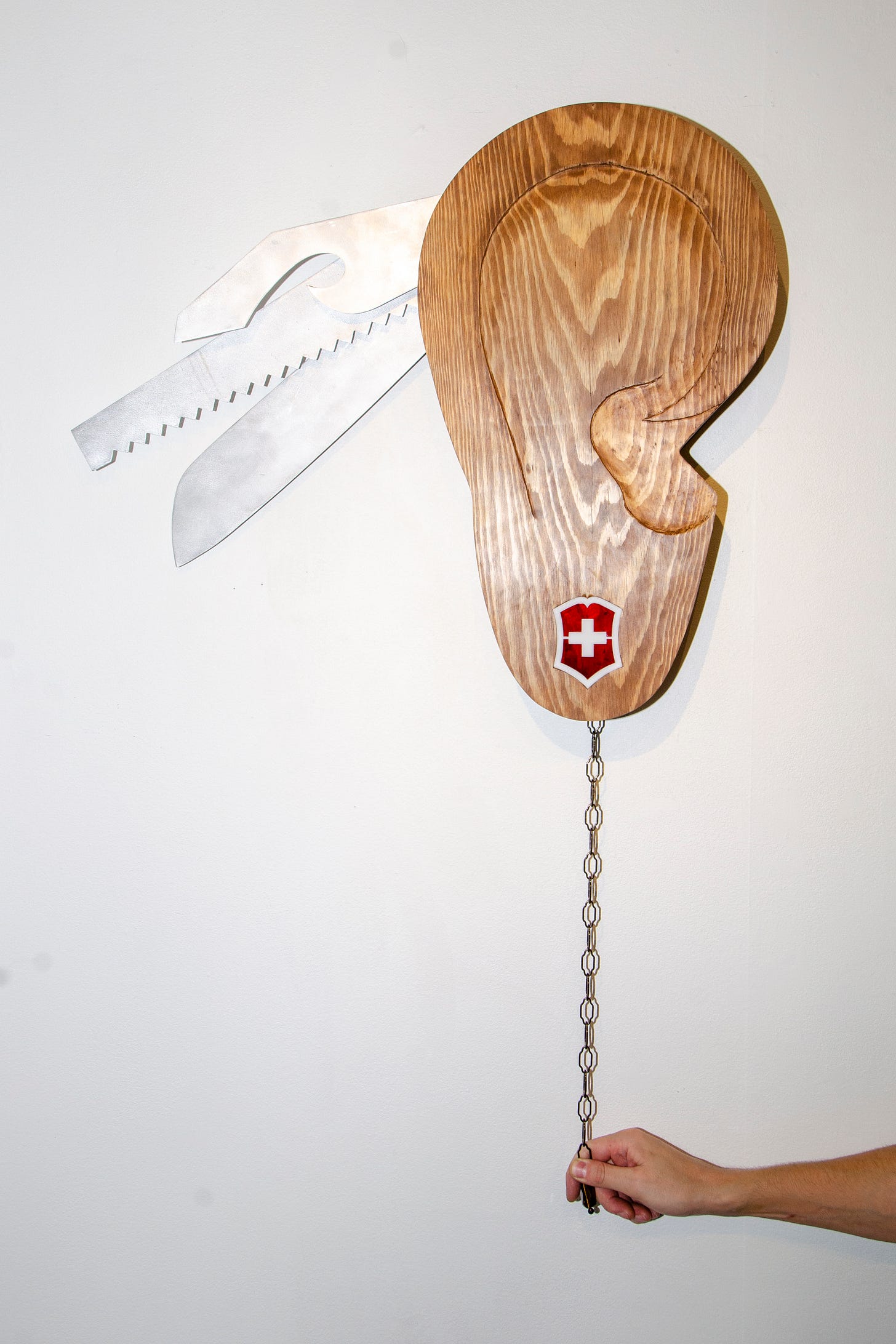
It sounds to me that you use this approach when coping with the absurdity or chaos of life. Tell me a little bit about it; how does it work? Because we all require processing. Is this also true of your previous work, such as the work showed on your website from when you lived in Tehran?
Maybe the work can be about something that upsets me. For example, I don't talk about beauty that much because beauty is always around and receives praise. So I talk about other things, and those things are just naked, and you don't want to hear or see them. I just present them in a satirical manner.
And yes, it is true of past work, which you can see on my website. Some of the work still has violence in them, but it also contains absurdity. For example, one of the pieces I created in Tehran called "Sharp as Shock" is humorous and absurd in some ways, but it also makes people uncomfortable due to the blades that protrude from the pieces..
I like to make interactive work. When I make sculptures, I usually invite people to touch them because for me the language of material is very important and I really care about tactility. If you were to ask me what kind of material do you work with - well I just try different materials. If I'm working on a collection that will be installed throughout the city, I might use concrete as the primary material. So the language of material is very important to me.
So you pick these materials because they have a meaning and you're trying to process some of the absurdity around them. And you put some satire in there. And you want to make people look and maybe feel a little bit uncomfortable from the sounds of it. What are you hoping people take away from that experience?
I like to give people this physical experience so that it isn't simply visible; I want them to feel something. It's not just about presenting one person's concept because I allow the audience the agency to interpret and adopt their own meaning. And, of course, I always have a statement about my work, even if it is about absurdity, in which case I have a statement that implies "absurdity." At the same time, I'm looking for that sensation and visceral experience that you have after seeing my work.
One of the ideas that I particularly liked was: what if I developed a doll for adults, how would it look? They are no longer naive; they have matured and have some strange views. That is why I started making them out of various materials. In the end, it gave the audience something where the doll is no longer beautiful but still has a fluffy feeling.
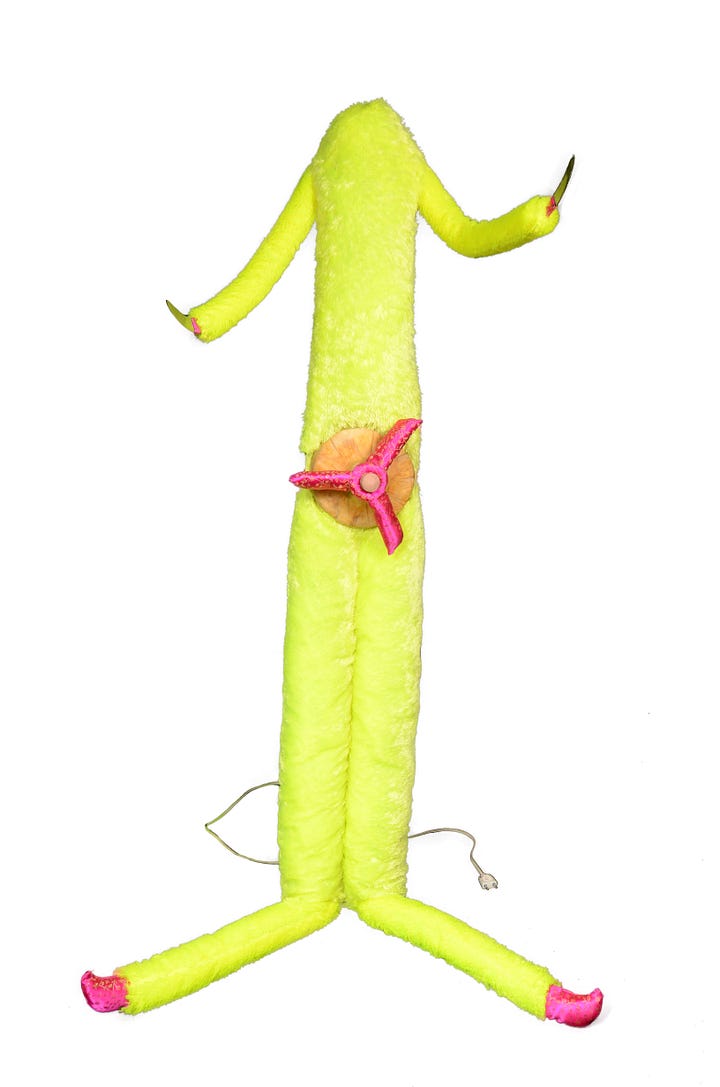
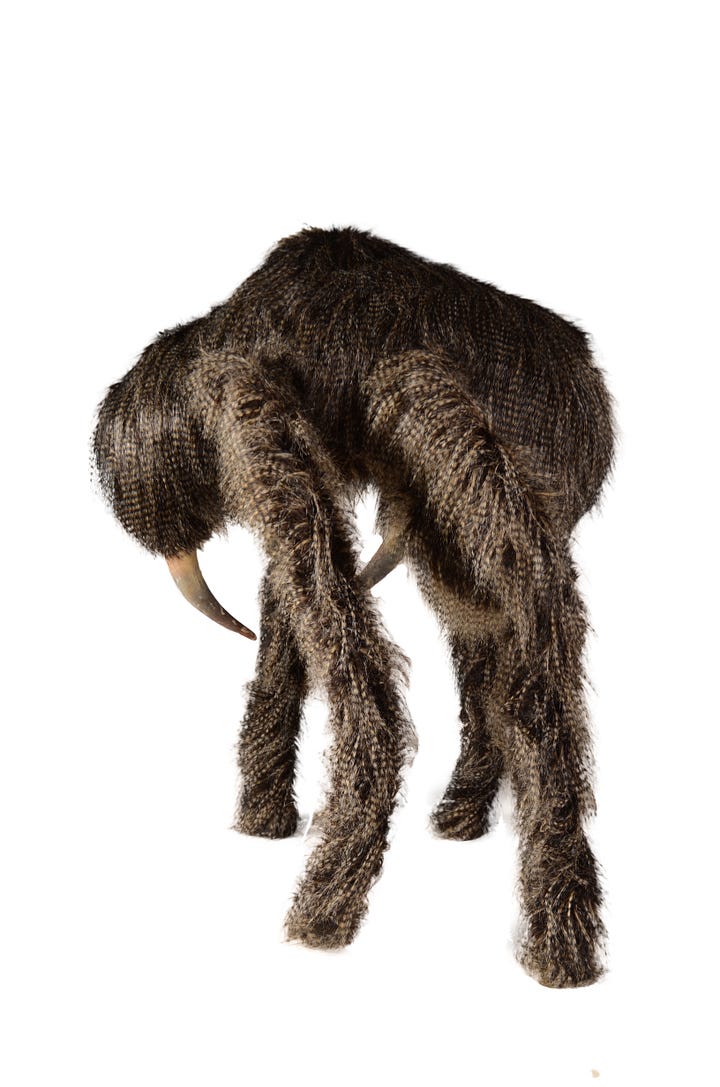
It is still doll-like, fluffy and yet not.
Yes! I like the weirdness of the work. Usually my work and the way that I express myself are constantly changing. It depends on the concept, the idea that I'm developing. In my previous work, I have also done movable sculptures.
You're inviting people to be tactile with it, to touch it, to interact.
Exactly! Interaction and touch are important. They are soft, so they invite you to touch and feel them against your skin.
One of the first times that I started working with tactility, is this sculpture, titled “Re-Action” that I had in Tehran years back for a curated show called 30-years of Iranian sculpture. They invited some big names and those big names invited some of their students - I was one of the students. I presented a sculpture with which I wanted to challenge this idea of big traditional sculptures made in a very traditional way. I made the pedestal and placed the sculpture inside it, so you couldn't see the sculpture. Some individuals, I recall, didn't like it especially the "know-it-alls."
So, once again, employing absurdity to get people to think about it, look inside, and interact.
Yes, exactly.
I invited the viewers to interact with “Re-Action.” It was not just about their reaction to the work, but also the sculpture’s reaction to being touched. I connected this sculpture to a small electrical current so it would give a small nuanced shock, which would hit anyone at random.
The video posted on your website shows that people were literally digging their hands in there. They reached inside the pedestal to touch the sculpture.
The thing is, they didn't at first. I had to put a note that said “just do it” because nobody wants to touch a sculpture at an art event. I had to tell people “guys , there is a sculpture in there, just touch it.” Then they started touching it and discovered that the shape was kind of figurative but still not complete. People started assuming and feeling that something will happen as they pushed deeper, but it didn't always happen. It also calls into question the anthropocentric assumption that it is not always about you as a human, and that other objects might have energy.
Is this another common element of our work? The anthropocentric?
I have worked with this anthropocentric notion a lot. During covid, I had a window exhibition at Detroit Stockholm. There was a sense that “now everything stops, and there is nothing anymore ... nothing left.” But instead I had a window exhibition because we couldn't open the gallery. It was a video projection. I dismantled a clock and projected the shadow of those dismantled objects inside the clock and animated them.
The name of the exhibit was “Homage to Muybridge, Schrodinger, Motion and Time.” It was a challenge to the "everything stops" statement because it says "things are still happening in life and time and everything." It's not all about humans, time is still moving even if we think everything has stopped.
This work also deals with asking questions. I never provide an answer in my work; instead, I always ask a question because I don't know the answer. Every time I create something, I think to myself, "Maybe this is a different way." It's not that I really believe in that; rather, I'm just thinking, "Well, perhaps we ought to consider this alternative."
That's how I work. And in the case of the clock projection, it alluded to the cynical cycle of history and time. Everything just keeps repeating itself. I utilized Muybridge's image and animated the clock's elements to pay homage to the first animation.
Your creation and your work is very much about processing and posing questions as well as about asking your audience to interact, to question.
The process is that I either find something or don't find it, but there is always something bothering me or that comes to my mind unexpectedly and I can't let it go. Then I make some doodles or sketches, or I work off my account with a picture.
For the last exhibition that you saw at Detroit Stockholm, I was thinking about absurdity and then I had an image of a dead bird head on a spring. ’This is very absurd,” I thought, “even having the spring move is very absurd. And imagine if you put some bird heads on top, and move them together - it will be fascinating.” That's the image that came to me, and I started processing it and doodling it and thinking about the material I'm going to use, the aesthetic, the color, and whether it'll be an installation, a sculpture, or something else.
Sometimes it comes with an image, and other times you're just doodling and you notice a line and think, "I have to continue that line," and suddenly you go somewhere. It's not that I'm always hunting for ideas; they occasionally just come to me.
Thank you Zahra! Absolutely wonderful to get this insight into your work and into how you work and create. To find our more about Zahra’s work visit her website: www.zahra-zavareh.com
Last month was dedicated to the work of Jennifer Trouton. To read articles inspired by her work, click on the following link/s:
Many of Us by Karen Grace
The Whispers of Wallpaper by Maja Milanovic
To read about other artists that we featured, please visit our Archives.
Buy our print magazine by clicking on the following link
https://tarantulaauthorsandart.substack.com/publish/post/129709764
The following video that Zahra made inspired by Albert Camus if for our paid subscribers. Thank you for your support.
Keep reading with a 7-day free trial
Subscribe to Tarantula: Authors and Art to keep reading this post and get 7 days of free access to the full post archives.

